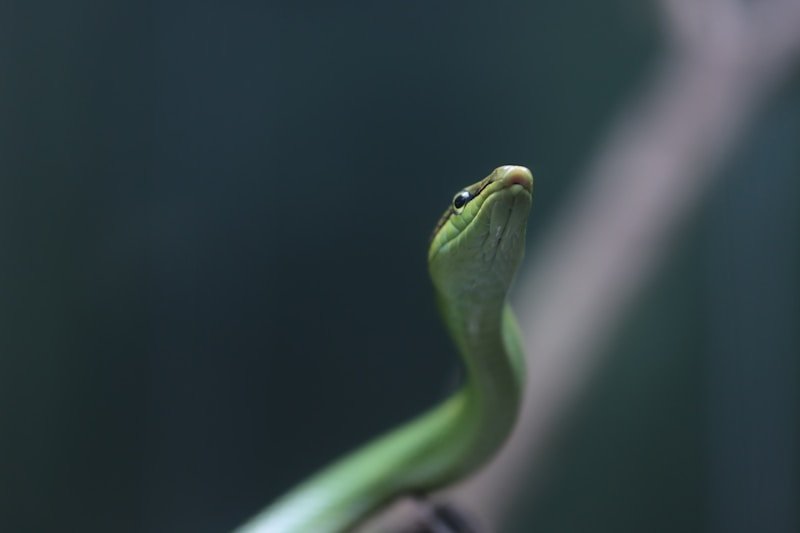Chameleons are among the most fascinating creatures on Earth, best known for their remarkable ability to change color. But there’s more to these reptiles than just their shifting hues. Found mainly in Africa, Madagascar, and parts of Asia and Europe, chameleons are a diverse group of lizards with more than 200 species. Their unique biology and behaviors make them one of nature’s most captivating subjects. In this article, we’ll explore their color-changing abilities, physical adaptations, habitat and diet, and the challenges they face in a changing world.
The Science Behind Color Change
Contrary to popular belief, chameleons don’t change color just to blend in with their surroundings. While camouflage is one function, color change primarily serves as a form of communication and a way to regulate body temperature. The secret lies in their skin, which contains layers of specialized cells called iridophores. These cells have tiny crystals that reflect light in different ways, depending on how they’re aligned.
When a chameleon is calm, these crystals are tightly packed, reflecting shorter wavelengths like blues and greens. When excited or stressed, the crystals spread apart, allowing longer wavelengths like reds and yellows to become visible. This process is controlled by hormones and neural signals, allowing for quick and dynamic color shifts. Male chameleons often display vibrant colors during courtship or territorial disputes, while females may change color to signal receptiveness or pregnancy.
Incredible Physical Adaptations
Chameleons possess several physical traits that set them apart from other reptiles. One of the most distinctive features is their zygodactylous feet—each foot has two toes pointing forward and two pointing backward, allowing for a strong grip on branches. Their prehensile tails act like a fifth limb, helping them balance and navigate through trees.
Another standout feature is their eyes, which can move independently of each other. This allows a chameleon to scan its surroundings in two directions at once, offering nearly 360-degree vision. When it spots prey—usually insects—it can fix both eyes on the target to gauge distance accurately. Then, with remarkable speed and precision, it shoots out its sticky, muscular tongue, often longer than its body, to snatch the prey in a split second.
Habitat, Diet, and Daily Life
Chameleons are primarily arboreal, meaning they live in trees, although some species also dwell in bushes or on the ground. They thrive in a variety of environments, from tropical rainforests to arid savannas. Each species has adapted to its specific habitat, with coloration and body size varying widely to suit their surroundings.
Chameleons are solitary animals, usually coming together only to mate. They are also diurnal, being active during the day and resting at night. Their diet mainly consists of insects such as crickets, grasshoppers, and flies, though larger species may eat small birds or reptiles. They rely heavily on stealth and patience, remaining motionless for long periods until an unsuspecting prey item comes close enough to strike.
Hydration is another unique aspect of chameleon life. Instead of drinking from standing water, most chameleons lick dew or raindrops from leaves. In captivity, they require misting systems or drip setups to stay properly hydrated.
Conservation and Environmental Challenges
While chameleons are mesmerizing, many species face significant threats. Habitat loss due to deforestation and agricultural expansion is a major concern, especially in biodiversity hotspots like Madagascar. Illegal pet trade is another issue; although some species adapt well to captivity, many do not survive long after being taken from the wild.
Climate change also poses a threat by altering the temperature and humidity levels that chameleons rely on. These reptiles are highly sensitive to environmental conditions, and even small shifts can affect their ability to hunt, mate, or regulate body temperature. Conservation efforts are underway to protect their habitats and regulate trade through international agreements like CITES (the Convention on International Trade in Endangered Species).
Public education plays a crucial role in these efforts. By raising awareness about the ecological importance and fragility of chameleon populations, scientists and conservationists hope to promote more sustainable interactions between humans and the natural world.
Chameleons are far more than living mood rings; they are complex, adaptive, and beautiful creatures that deserve our admiration and protection. Their colorful world is not just about aesthetics—it’s a vivid reflection of evolution, adaptation, and survival. Understanding and preserving that world ensures that future generations can continue to marvel at these remarkable reptiles.

